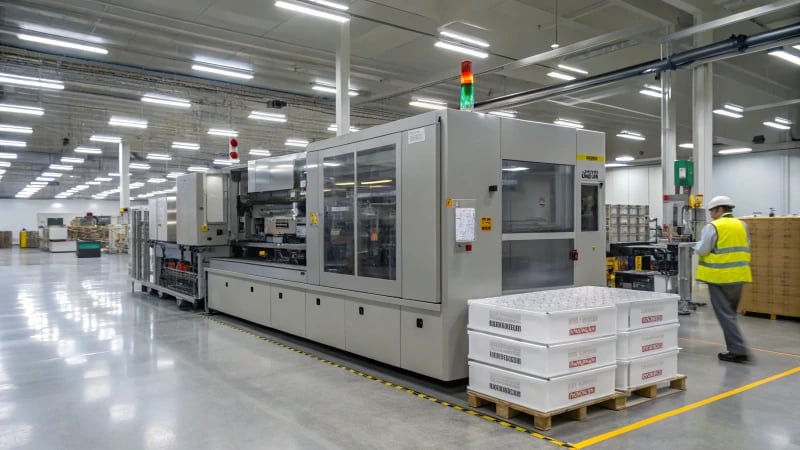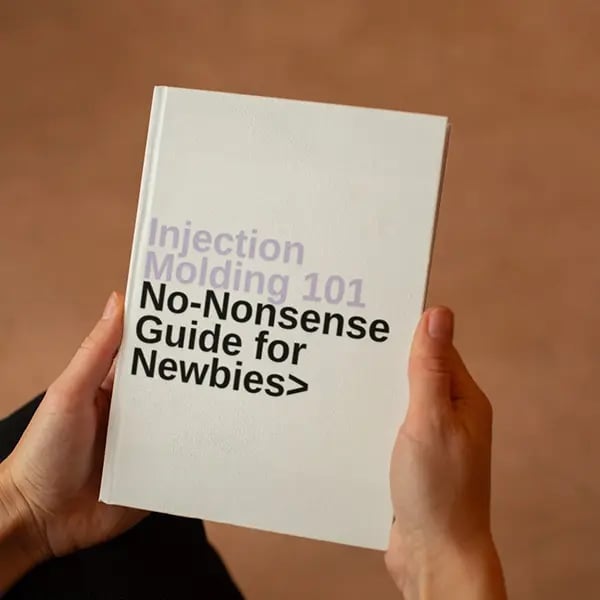
Navigating the complex world of REACH compliance in injection molding can feel overwhelming, but it’s crucial for success.
To comply with REACH in injection molding: select compliant materials, avoid restricted substances, manage suppliers, maintain process controls, and document material usage.
Starting out, understanding REACH regulations felt like untangling a giant ball of yarn. However, as I delved deeper into the details of supplier management and production process control, it became more manageable. It’s all about creating strategies that work for your unique production needs while ensuring compliance every step of the way. Let me walk you through some of the strategies I’ve found most helpful in ensuring successful adherence.
REACH compliance is optional for injection molding.False
REACH compliance is mandatory to avoid penalties and ensure market access.
Material selection is crucial for REACH compliance.True
Using materials that meet REACH standards is essential for compliance.
- 1. How can I choose materials that meet REACH standards?
- 2. How Can I Master Supplier Management Best Practices?
- 3. How Can You Control the Injection Molding Process for Compliance?
- 4. What Record-Keeping Practices Support REACH Compliance?
- 5. How do I conduct a comprehensive product compliance assessment?
- 6. Conclusion
How can I choose materials that meet REACH standards?
Ever felt overwhelmed by the complex maze of REACH standards? You’re not alone. Navigating these regulations is essential to keep your products safe and compliant.
To meet REACH standards, choose materials already registered, avoid SVHCs, conduct thorough supplier audits, regularly check the ECHA‘s SVHC list, and ensure all compliance documents are in order.

Understanding REACH Standards
I remember the first time I stumbled upon the intricacies of REACH regulations—it was like deciphering an ancient code. But once you get the hang of it, it’s not just about compliance; it’s about ensuring the safety of everyone who uses your products. The European Union’s REACH regulation1, which stands for Registration, Evaluation, Authorization, and Restriction of Chemicals, is designed to protect human health and the environment from potential risks posed by chemicals. As overwhelming as it seems, adhering to these guidelines is crucial.
Material Selection
Prioritize REACH Registered Materials
One lesson I learned early on is the importance of choosing materials that have completed their REACH registration. Picture this: you’re about to finalize a material for a project, and your supplier confidently hands over their compliance documentation, complete with registration numbers. For instance, when using polycarbonate (PC), I always request proof of registration with the European Chemicals Agency (ECHA). It gives peace of mind knowing I’m on the right side of the law.
Avoid Substances of Very High Concern (SVHC)
A memorable experience was when I unknowingly used materials containing substances from the SVHC list2. It was a costly mistake that taught me to regularly check the ECHA‘s updates to avoid restricted substances like certain phthalates or heavy metals.
Supplier Management
Conduct Thorough Audits
Think of this as detective work. Thorough supplier audits have saved me from compliance headaches more times than I can count. It’s essential to get detailed info on material composition, including chemical names and CAS numbers. Establishing clear agreements with suppliers about their REACH compliance responsibilities is non-negotiable for me now.
| Supplier Compliance Checks | Description |
|---|---|
| Composition Details | Name, content, CAS number |
| Agreements | Responsibilities for REACH compliance |
Supplier Rating System
Creating a rating system for supplier compliance has been a game-changer. By regularly assessing and sometimes even reducing cooperation with non-compliant suppliers, I’ve managed to mitigate risks effectively.
Production Process Control
Adhere to Safety Data Sheets (SDS)
Following SDS guidelines religiously during production ensures proper handling and storage conditions. I remember an instance where neglecting this led to VOC accumulation—it was a wake-up call about the importance of good ventilation.
Regular Equipment Maintenance
I’ve learned that regular maintenance can prevent cross-contamination. Especially when switching materials, thorough cleaning of equipment has become a routine task.
Record Keeping for Compliance
Keeping meticulous records has saved me on more than one occasion. A robust system helps trace material usage and maintain quality control, which is crucial for REACH compliance over a decade-long period.
Product Compliance Assessment
Before exporting to the EU, conducting a comprehensive REACH compliance assessment has been pivotal. Testing products for chemical release under various scenarios helps ensure they meet regulatory requirements.
By embracing these guidelines and maintaining a proactive approach, I’ve been able to effectively choose materials that not only meet REACH standards but also guarantee the safety and compliance of my products in European markets.
REACH stands for Registration, Evaluation, Authorization, and Restriction.True
REACH is an EU regulation focused on chemical safety.
Suppliers must provide REACH registration numbers for materials.True
Registration numbers verify compliance with REACH standards.
How Can I Master Supplier Management Best Practices?
Navigating the world of supplier management can feel like walking a tightrope, but mastering it is key to thriving in any business landscape.
Master supplier management by conducting regular audits, ensuring compliance with standards like REACH, maintaining transparent communication, and performing ongoing evaluations to mitigate risks and strengthen supplier relationships for a reliable supply chain.

Embracing Compliance and Rigorous Auditing
In the early days of managing suppliers, I learned the hard way how crucial compliance is. Imagine sourcing polycarbonate materials and discovering they didn’t meet REACH3 standards—talk about a nightmare! Now, I never skip those thorough audits. I always ensure our suppliers provide REACH registration proof, so we’re not left scrambling.
| Material | Requirement | Action |
|---|---|---|
| PC | REACH registration | Obtain docs |
| Others | SVHC checks | Regular audit |
The Power of Open Communication and Clear Agreements
One thing I’ve realized is how vital open communication is. I remember a project almost derailing because a supplier didn’t notify us about a change in the material status. Since then, every agreement we draft clearly outlines these responsibilities. Ensuring everyone is on the same page saves so much headache down the line.
- Documentation: Clear agreements ensure all parties understand their roles.
- Notifications: Suppliers should update us on SVHC list changes.
Performance Assessment as a Growth Tool
Evaluating supplier performance isn’t just about finding faults; it’s a growth opportunity. I use a structured rating system to spot non-compliance issues and provide feedback. This has transformed our relationships from transactional to collaborative.
- Rating System: Develop criteria for evaluating suppliers.
- Feedback Loop: Constructive feedback helps suppliers enhance their services.
Mitigating Risks with Process Control
I can’t stress enough the importance of process control. Proper handling and use of materials during production have saved us from potential disasters. Regular equipment maintenance and meticulous record-keeping are non-negotiables in my book.
- Maintenance: Regularly clean equipment to prevent contamination.
- Record-Keeping: Maintain detailed records of all processes for compliance verification.
By weaving these practices into the fabric of our operations, I’ve seen firsthand how they lead to regulatory compliance and stronger supplier ties. These strategies pave the way for more efficient supply chains and high-quality products. For those eager to explore process control techniques4, countless resources are available online.
Supplier audits ensure REACH compliance.True
Audits verify if suppliers meet regulatory standards like REACH.
Open communication is optional in supplier management.False
Communication is essential for timely updates on material changes.
How Can You Control the Injection Molding Process for Compliance?
Remember the first time you tried to cook a complicated dish? Ensuring every ingredient was fresh and perfectly measured was just the beginning. Managing the injection molding process feels a lot like that, but with higher stakes.
To ensure compliance in injection molding, select regulatory-compliant materials, manage suppliers, maintain equipment, and keep detailed records, emphasizing transparency and communication.

Material Selection and Supply Chain Management
I once likened selecting the right materials for injection molding to picking out ingredients for a new recipe. You can’t just throw anything in the pot and expect a masterpiece. Prioritizing materials that meet REACH registration5 requirements is crucial, much like ensuring the freshness and quality of your ingredients. For instance, when I opted for polycarbonate, I made sure to ask my supplier for REACH documentation—it’s like checking the expiration date on a carton of milk.
Supplier management is another layer of this intricate cake. I learned early on that auditing suppliers isn’t just a formality—it’s essential. Establishing agreements and a rating system helps me maintain compliance and decide when it’s time to change suppliers if they don’t meet standards. Trust me, I’ve been there when a supplier failed to notify me of changes. It was like cooking with spoiled milk; the results weren’t pretty.
| Material Selection Tips | Supplier Management Tips |
|---|---|
| Verify REACH documentation | Audit supplier compliance |
| Avoid SVHC substances | Sign REACH agreements |
| Monitor ECHA updates | Rate suppliers regularly |
Production Process Control and Record-Keeping
In my workshop, process control is my mantra. Following Safety Data Sheets’ recommendations is akin to following grandma’s secret recipe—storage and handling guidelines are non-negotiable. For materials with VOCs, I ensure proper ventilation, much like airing out a kitchen after frying fish.
Equipment maintenance is my bread and butter. Regular cleaning prevents cross-contamination, just as keeping your knives clean prevents flavors from mingling where they shouldn’t. Detailed record-keeping is my secret weapon. Like keeping a journal of your cooking experiments, these records help trace any compliance hiccups back to their source quickly.
Product Compliance Assessment and Communication
After production, I conduct thorough compliance assessments. It’s not unlike taste-testing your dish before serving it to guests. Does it release non-compliant substances? Simulated environment testing and chemical analysis help answer that question.
For products destined for the EU, adherence to REACH requirements is paramount. Communicating compliance information clearly is like labeling allergens on a menu—vital for transparency. Providing detailed chemical data and labeling REACH compliance ensures customers feel safe consuming what I’ve "cooked up." It’s all about serving up peace of mind.
| Compliance Assessment | Communication Strategies |
|---|---|
| Simulated environment testing | Provide detailed chemical lists |
| Chemical analysis | Label REACH compliance on packaging |
| EU certification if needed | Update product manuals regularly |
REACH documentation is required for all materials.True
REACH documentation ensures materials meet compliance standards, crucial for regulatory adherence.
Supplier audits are optional for compliance.False
Supplier audits are essential to verify compliance and manage supply chain risks effectively.
What Record-Keeping Practices Support REACH Compliance?
Ever found yourself tangled in the web of REACH compliance? Trust me, I’ve been there too. Let’s unravel the mystery together and keep your business on the right track with top-notch record-keeping practices.
Maintain detailed records of materials, batch numbers, and processing parameters, including supplier compliance and safety data. Conduct regular audits and retain records properly to support REACH compliance.

Key Components of Effective Record-Keeping
1. Comprehensive Material Documentation
When I first started working with REACH compliance, I quickly realized the importance of keeping thorough records of every material we used. Each batch number6 and specific chemical composition7 is meticulously documented. This practice has been a lifesaver, especially when an unexpected compliance issue arises. With everything well-documented, tracing back to the source becomes a straightforward process.
2. Supplier Compliance Data
I remember the time we almost faced a setback because a supplier wasn’t meeting REACH standards. Since then, I’ve made it a point to keep all necessary documents like REACH registration numbers and Safety Data Sheets (SDS)8 from our suppliers. I also conduct regular audits to ensure they are up-to-date with their compliance. It’s a bit of extra work, but knowing that all agreements and audit logs are in place gives me peace of mind.
| Supplier | Compliance Status | Last Audit Date |
|---|---|---|
| Supplier A | Compliant | 2023-09-15 |
| Supplier B | Pending | 2023-06-20 |
3. Production Process Records
In the production phase, I diligently record parameters like processing temperatures9 and dosages. This not only ensures our products maintain high quality but also provides a detailed trail in case of any compliance inquiries. It’s like having a map that guides you back to each step of the production process.
4. Retention Periods and Audits
The ten-year record retention guideline might seem overwhelming, but regular audits help me catch any discrepancies early on. By doing so, I ensure that all documentation aligns perfectly with REACH standards.
The Role of Communication in Compliance
Lastly, communication is key. I’ve learned that keeping customers informed about product compliance is just as vital as maintaining records. Whether it’s through labels and safety information10 on products or detailed compliance declarations, effective communication builds trust and transparency.
By focusing on these practices, I’ve not only strengthened our record-keeping but also streamlined operations, ensuring we remain compliant and efficient.
Batch numbers must be recorded for REACH compliance.True
Documenting batch numbers ensures traceability, aiding compliance.
REACH records should be kept for at least five years.False
REACH guidelines typically require records to be kept for ten years.
How do I conduct a comprehensive product compliance assessment?
Navigating the maze of product compliance can feel daunting, but I’ve been there and emerged successfully. Let me share my roadmap with you.
Conduct a comprehensive product compliance assessment by evaluating materials, production processes, and final product tests against regulatory standards, emphasizing material selection, supplier management, and effective communication.

Understanding Compliance Requirements
When I first started diving into compliance, it felt like learning a new language. I had to familiarize myself with various regulations, such as REACH compliance11. This meant understanding restrictions on certain chemicals and ensuring all documentation was in place. I remember the moment it clicked—these weren’t just rules to follow; they were pathways to making safer, better products.
Material Selection and Supply Chain Management
-
Material Selection:
- I recall a project where choosing the right material was critical. We prioritized materials meeting REACH requirements. I’d often check registration numbers with suppliers, especially for materials like polycarbonate (PC).
- Avoiding Substances of Very High Concern (SVHC) became second nature as I regularly checked ECHA‘s updated list.
-
Supplier Management:
- Supplier audits became my routine. Establishing clear agreements about their REACH responsibilities was crucial.
- Implementing a supplier rating system helped us manage compliance risks better, ensuring only the best partners remained in our supply chain.
Production Process Control and Record-Keeping
-
Process Control:
- I’ve always stressed the importance of following Safety Data Sheets (SDS) for material handling. Once, we narrowly avoided a mishap due to vigilant equipment maintenance, ensuring no residue or cross-contamination occurred.
-
Record Keeping:
- Detailed records were our lifeline, kept meticulously for at least a decade. They aligned with regulatory requirements and provided peace of mind when tracing product history during compliance checks.
Product Compliance Assessment and Communication
-
Product Assessment:
- Testing products under normal and misuse conditions was a lesson learned early on. Ensuring compliance with specific regulations of target markets like the EU was non-negotiable.
-
Communication & Information Provision:
- Clear communication with customers about chemical substances in products became our hallmark. Labeling products with compliance statements and providing detailed documentation not only built trust but also streamlined regulatory processes.
| Aspect | Key Actions |
|---|---|
| Material Selection | Prioritize REACH-compliant materials |
| Supplier Management | Audit suppliers, manage with a rating system |
| Process Control | Adhere to SDS guidelines, ensure good ventilation |
| Record Keeping | Maintain detailed records for traceability |
| Product Assessment | Simulate use tests for harmful release |
| Communication & Information | Provide clear labels and documentation |
Every step in this journey has taught me the value of diligence and attention to detail. While compliance can seem complex, breaking it down into manageable steps makes it achievable—and worth every effort.
REACH compliance involves avoiding SVHCs.True
REACH compliance requires avoiding Substances of Very High Concern (SVHC).
Compliance records must be kept for 5 years.False
Compliance records should be maintained for at least 10 years.
Conclusion
This guide outlines essential steps for achieving REACH compliance in injection molding, focusing on material selection, supplier management, process control, and thorough record-keeping to ensure regulatory adherence.
-
Understanding the basics of REACH helps in comprehending its impact on material selection. ↩
-
Accessing the current SVHC list ensures you avoid using restricted substances in materials. ↩
-
Understanding REACH compliance is crucial for ensuring your supplier meets legal standards, reducing risk and enhancing product safety. ↩
-
Process control is essential for maintaining quality and compliance; exploring these techniques helps ensure operational efficiency. ↩
-
Understanding REACH registration helps in selecting compliant materials and ensuring regulatory adherence. ↩
-
Understanding batch numbers enhances traceability, crucial for compliance verification and quality control. ↩
-
Learn best practices for documenting chemical compositions, essential for REACH compliance. ↩
-
Mastering SDS interpretation ensures proper handling and storage of chemicals. ↩
-
Knowing optimal processing temperatures aids in maintaining product integrity. ↩
-
Explore how labels communicate compliance and safety to consumers. ↩
-
Explore detailed insights on how REACH affects material choices, crucial for ensuring legal compliance. ↩






